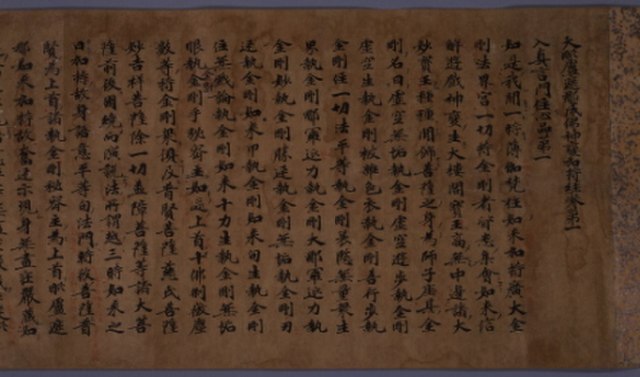Classes of Tantra in Tibetan Buddhism
Classes of Tantra in Tibetan Buddhism refers to the categorization of Buddhist tantric scriptures in Indo-Tibetan Buddhism. Tibetan Buddhism inherited numerous tantras and forms of tantric practice from medieval Indian Buddhist Tantra. There were various ways of categorizing these tantras in India. In Tibet, the Sarma schools categorize tantric scriptures into four classes, while the Nyingma (Ancients) school use six classes of tantra.
Illuminated Pages from a Dispersed DharanI Manuscript
Panel from a Tibetan Buddhist Ritual Crown Depicting Buddha Vairocana, late 13th–early 14th century.
A Hevajra Mandala
Deities of the Chakrasamvara Tantra
Buddhist tantric literature
Buddhist tantric literature refers to the vast and varied literature of the Vajrayāna Buddhist traditions. The earliest of these works are a genre of Indian Buddhist tantric scriptures, variously named Tantras, Sūtras and Kalpas, which were composed from the 7th century CE onwards. They are followed by later tantric commentaries, original compositions by Vajrayana authors, sādhanas, ritual manuals, collections of tantric songs (dohās) odes (stotra), or hymns, and other related works. Tantric Buddhist literature survives in various languages, including Sanskrit, Tibetan, and Chinese. Most Indian sources were composed in Sanskrit, but numerous tantric works were also composed in other languages like Tibetan and Chinese.
A manuscript of the Vajravali, a tantric commentary by Abhayakaragupta (manuscript c. 11th or 12th century CE, Sanskrit in Nepalaksara script).
Kāraṇḍavyūha Sūtra manuscript (c. 14th century, Newari) with a miniature illustration of Avalokiteśvara
Chinese translation of the Vairocanābhisaṃbodhi (Awakening of Vairocana)
The Garbhadhātu maṇḍala, derived from the teachings of the Mahāvairocana Tantra. Buddha Vairocana is located in the center.








